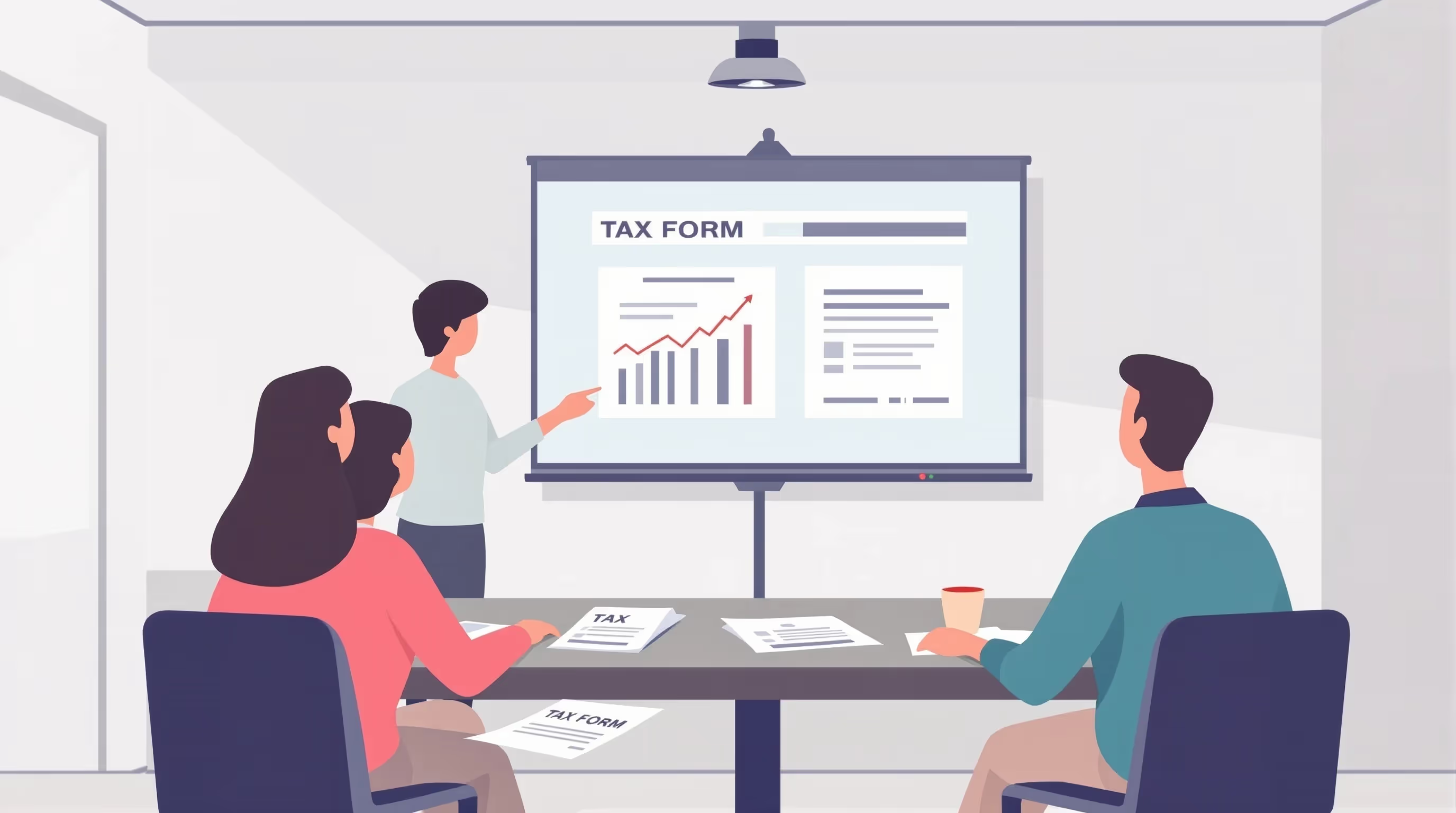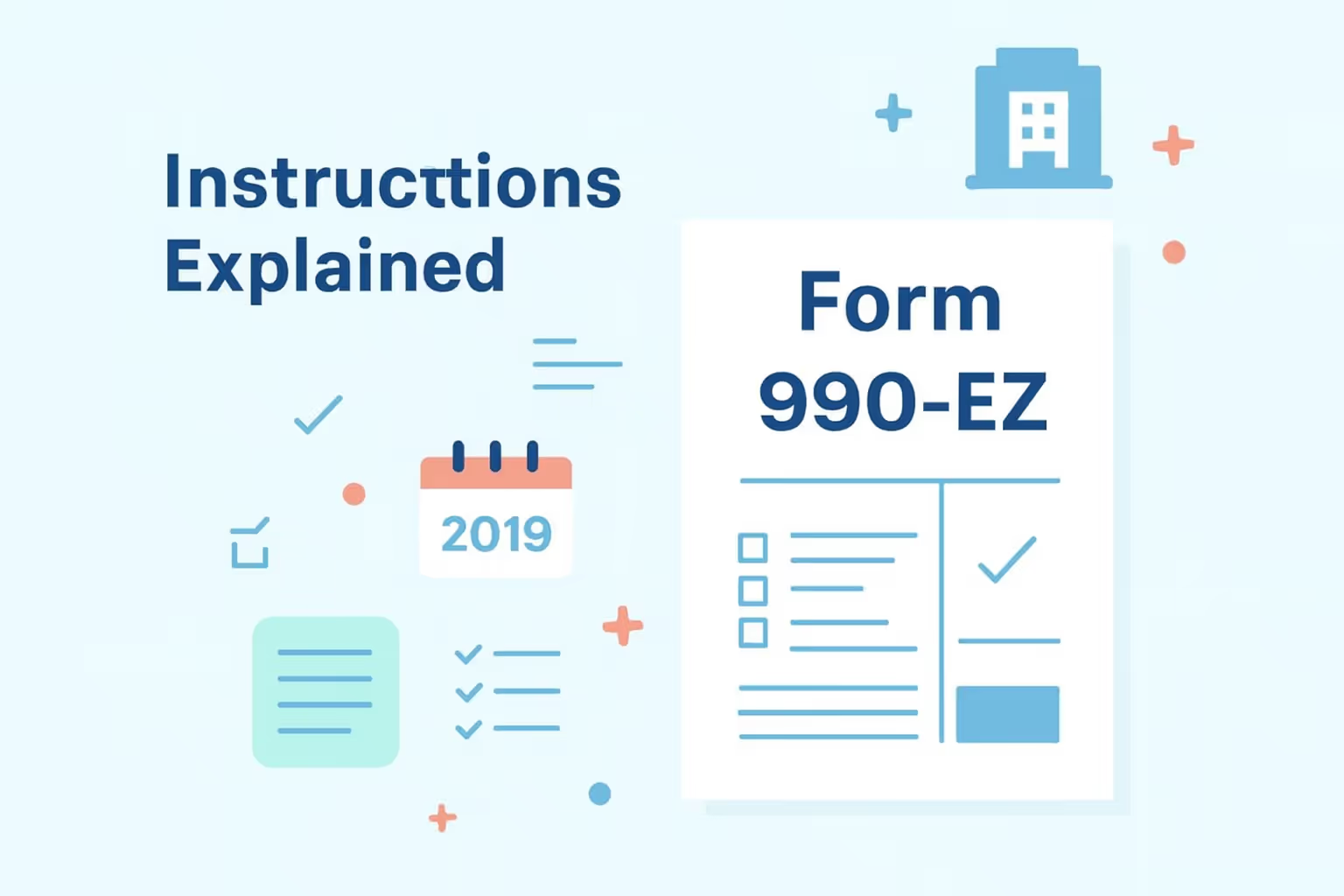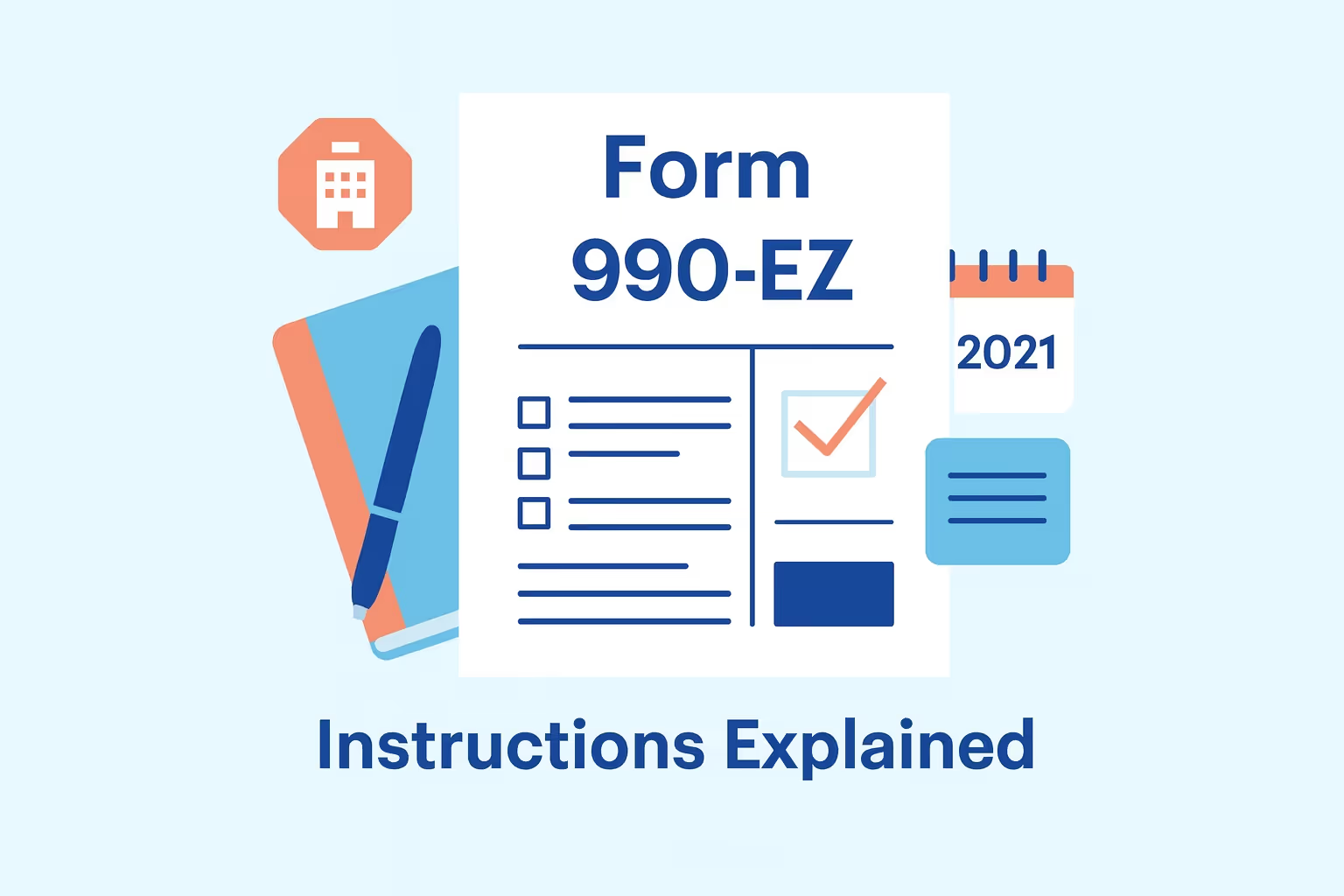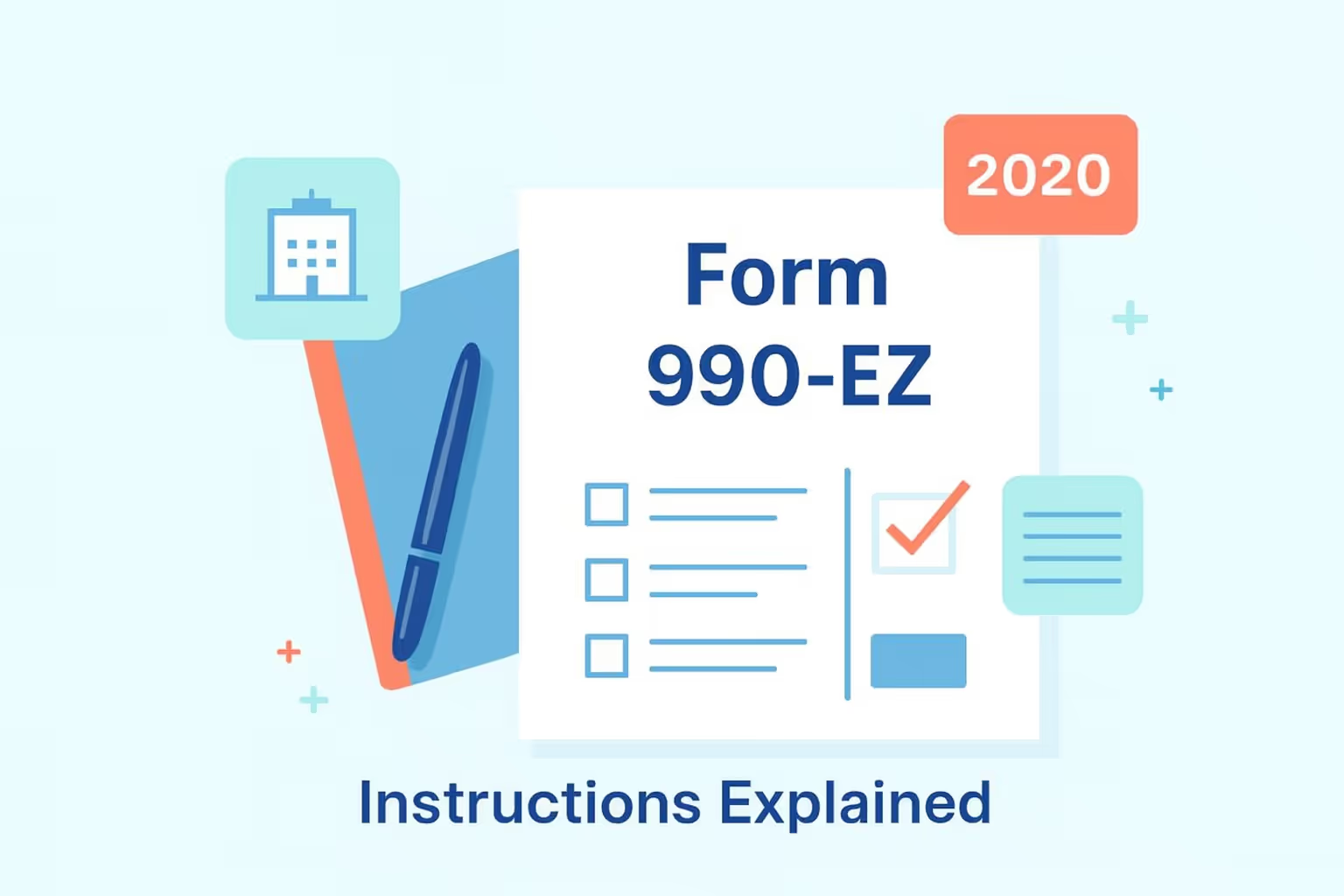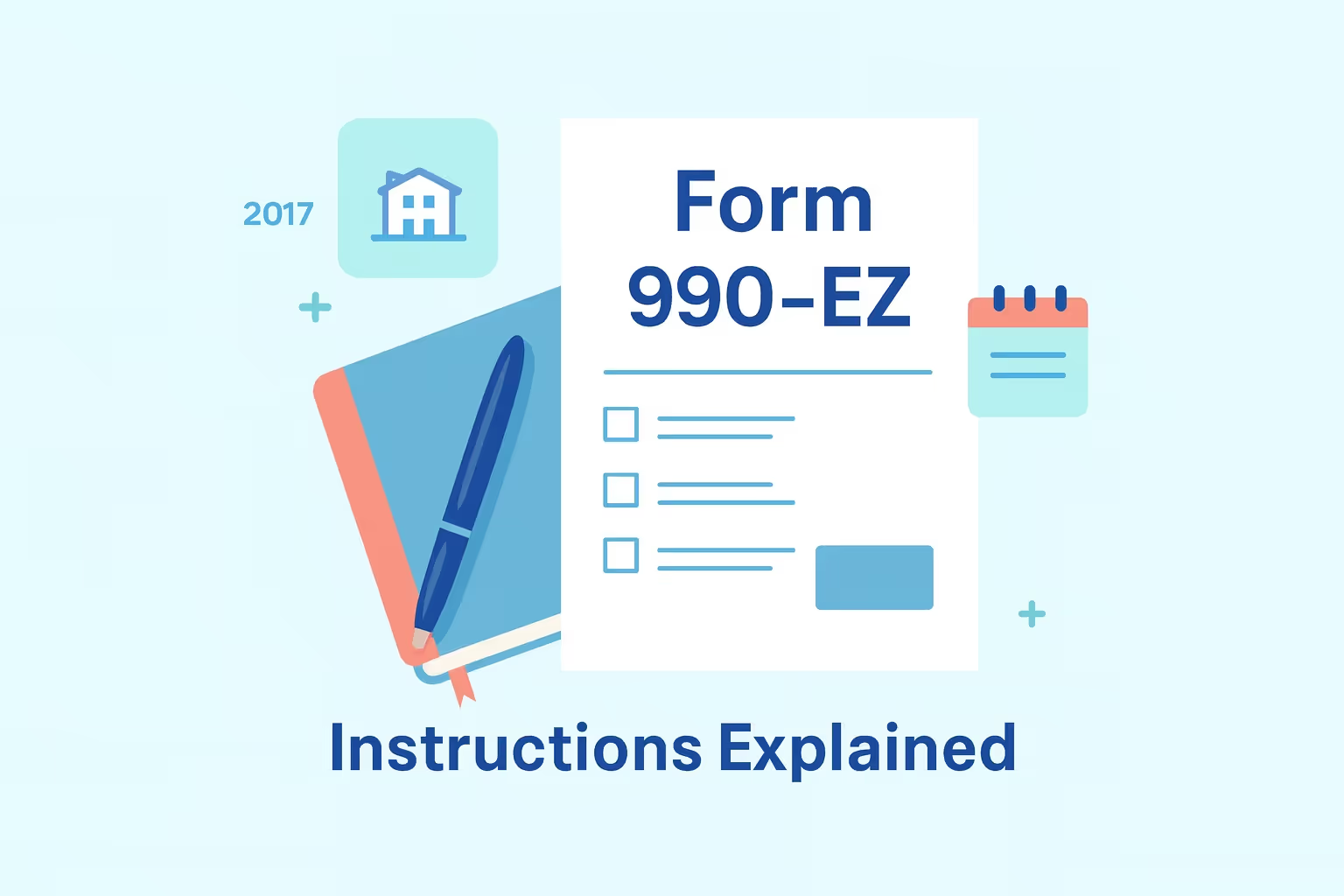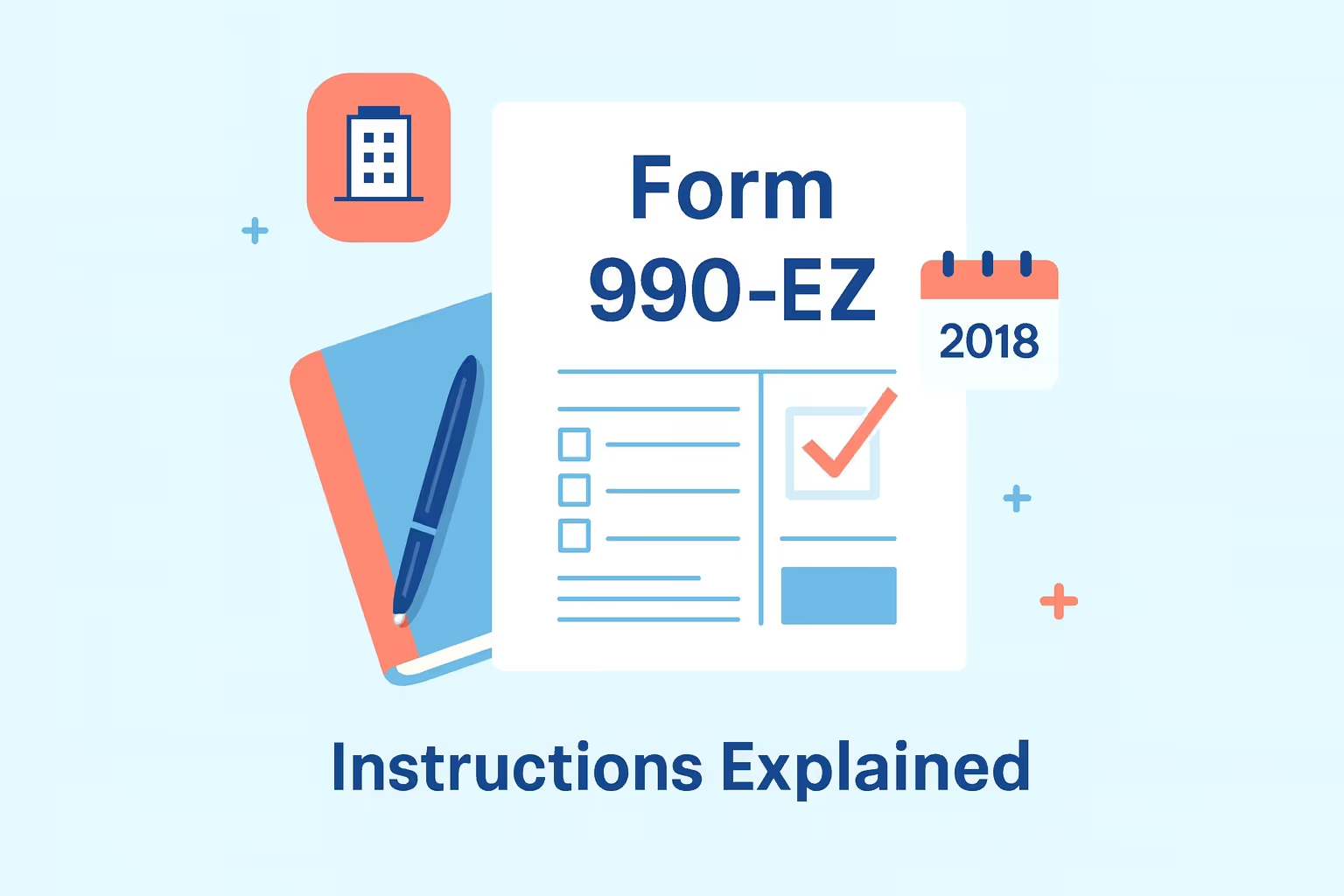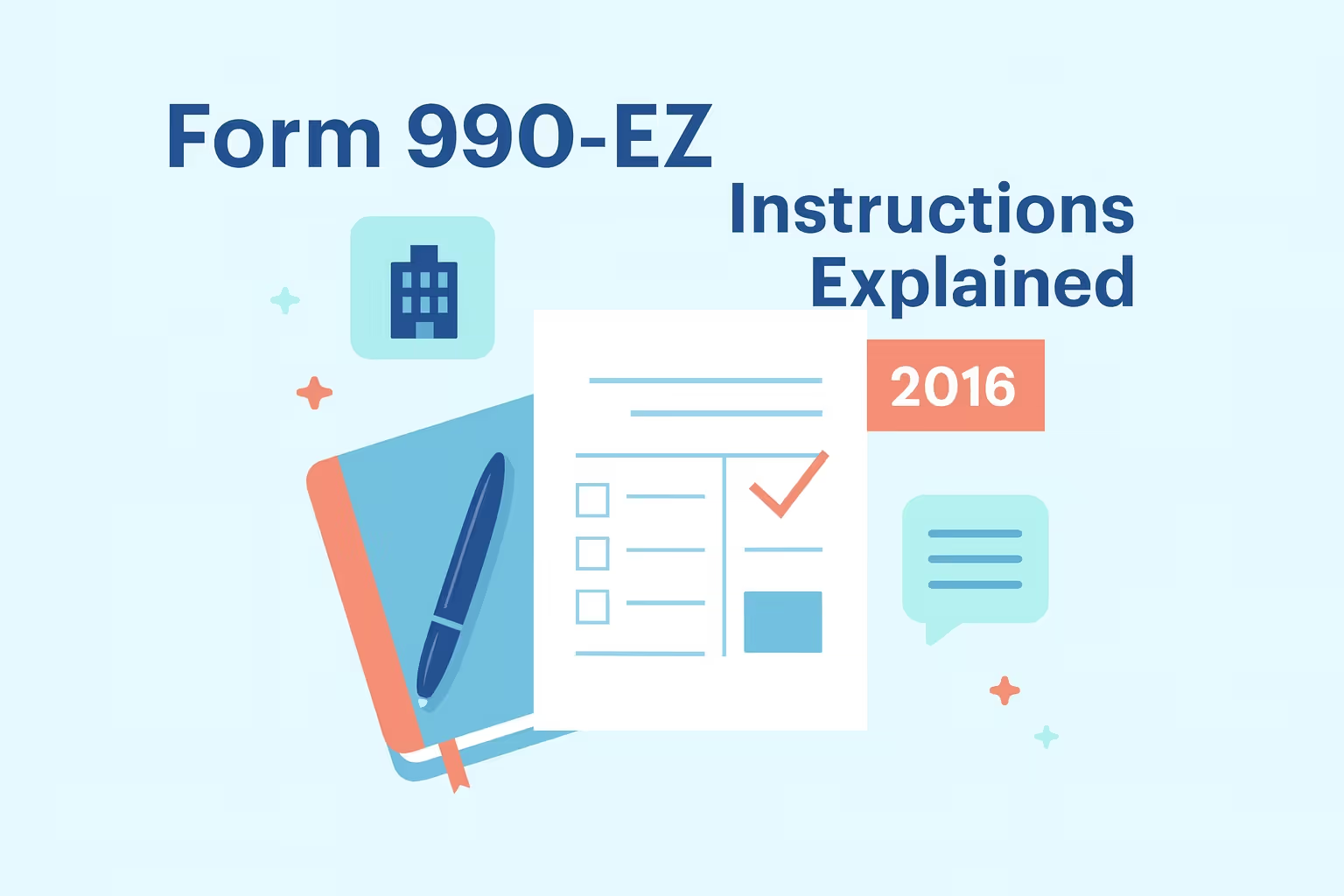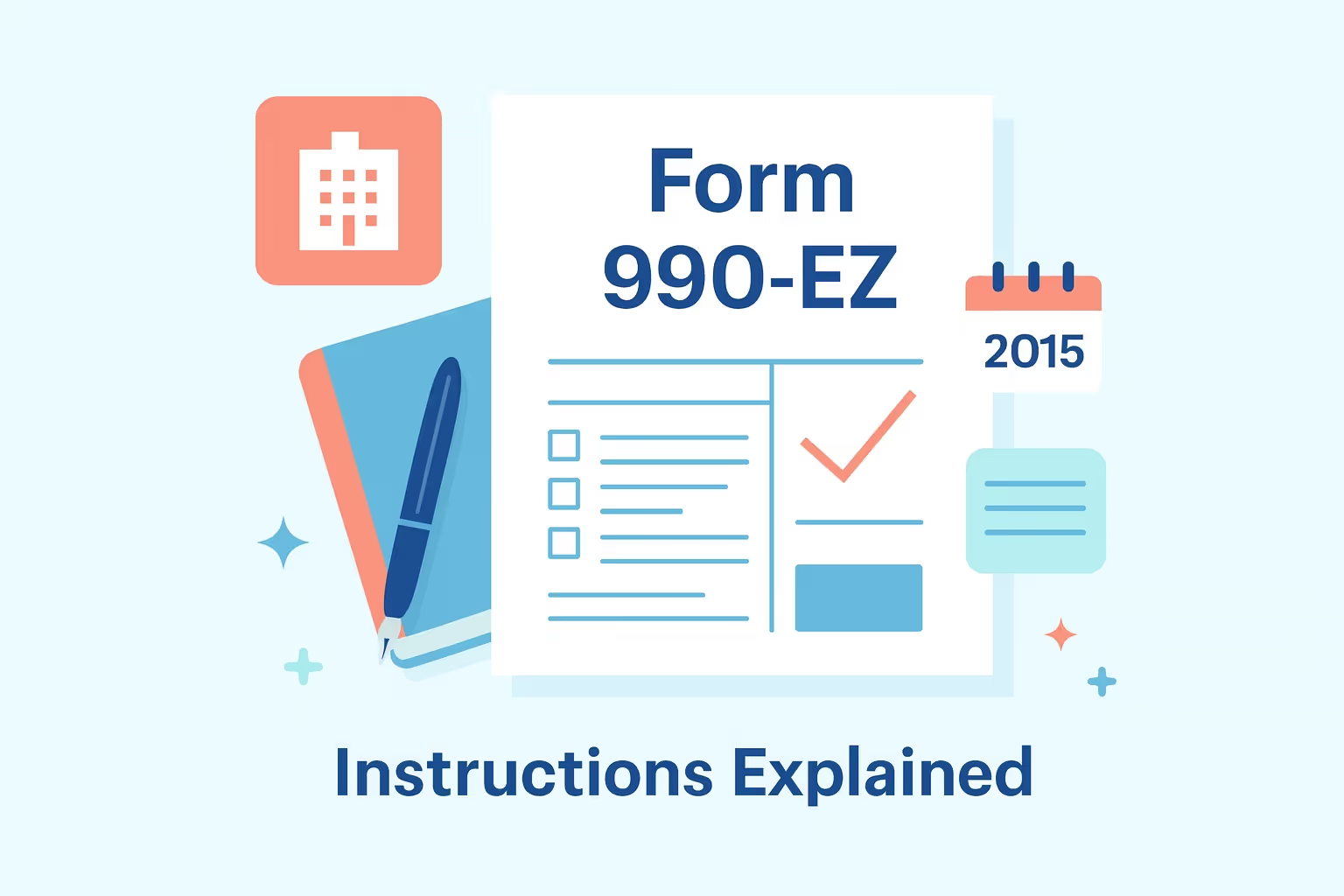
What IRS Form 990-EZ (2017) Is For
IRS Form 990-EZ (2017) is a simplified tax return for tax-exempt organizations that meet specific financial criteria. Nonprofits with gross receipts under $200,000 and total assets under $500,000 are eligible to file this form instead of the more detailed Form 990. The form provides the IRS with the necessary data regarding the organization’s mission, expenses, revenue, and donors.
It helps ensure that eligible nonprofit organizations maintain their tax-exempt status and comply with the IRS’s annual filing requirements. Nonprofits must file this return annually to continue enjoying their tax-exempt benefits, unless they qualify for the Form 990-N e-postcard. Filing Form 990-EZ is a key step in maintaining transparency and accountability.
For a detailed reference that outlines the eligibility rules, disclosures, and schedules required for this return, readers may consult our Form 990-EZ in the Federal Specialty Forms hub, which provides structured instructions for tax-exempt organizations that use the short form.
When You’d Use IRS Form 990-EZ
IRS Form 990-EZ should be filed by nonprofit organizations that meet the criteria of having gross receipts under $200,000 and total assets below $500,000. Organizations that fail to submit an annual return for three consecutive years may risk losing their tax-exempt status. When the organization’s fiscal year ends, Form 990-EZ ensures the timely submission of the annual return, preserving tax-exempt status.
If your organization is unsure whether it qualifies, review IRS guidelines and search for available resources. Filing this form helps complete your organization’s records, ensuring compliance with IRS regulations. Filing on time also prevents costly penalties for failure to file, such as fees for late submissions.
Key Rules or Details for 2017
In 2017, tax-exempt organizations with gross receipts of less than $200,000 and total assets under $500,000 were eligible to file Form 990-EZ. The IRS outlined specific rules for filing, such as ensuring that Form 990-EZ was used and not the current year’s version. Organizations affected by Hurricanes Harvey, Irma, or Maria received special provisions for filing during this period.
- Electronic filing was required for organizations with over $10 million in assets.
- Eligible organizations must file Form 990-EZ each year.
- Late filing penalties can reach $10,000 or 5% of gross receipts.
These rules ensure that nonprofit organizations stay compliant while maintaining their tax-exempt status and avoiding unnecessary costs.
Step-by-Step (High Level)
Follow these steps to file Form 990-EZ for 2017:
- Download the Form: Access Form 990-EZ from the IRS link or official website.
- Gather Financial Information: Collect necessary financial data, including revenue, expenses, and donors.
- Complete the Form: Fill out the form with accurate information, ensuring all sections are covered.
- Attach Required Schedules: If applicable, include schedules such as Schedule A for 501(c)(3) organizations.
- Submit the Form: File Form 990-EZ by mail or e-postcard, depending on eligibility.
Be sure to review all the tips on the IRS website to avoid common filing errors. Submitting your form on time helps maintain your tax-exempt status.
Common Mistakes and How to Avoid Them
Accurate filing of Form 990-EZ is crucial for maintaining tax-exempt status. Many organizations make mistakes that can delay processing or lead to penalties. Common errors include failing to sign the form, missing important schedules, or using the wrong version of the form.
- Incomplete Information: Accurately report all revenue and expense data.
- Wrong Form Version: Use the 2017 version of Form 990-EZ.
- Missing Donor Information: Double-check Schedule B for any missing donor data.
- Failure to Attach Schedules: Make sure to attach required schedules like Schedule A for 501(c)(3) organizations.
Carefully reviewing the form helps avoid common mistakes and ensures compliance. Timely filing prevents penalties and helps maintain tax-exempt benefits.
What Happens After You File
After submitting Form 990-EZ, the IRS processes the return to verify the information and ensure compliance with its requirements. Processing typically takes 6–8 weeks, but it may take longer for paper submissions. Once your form is processed, you will receive confirmation that your annual return was successfully filed.
You may receive IRS notices requesting additional information or clarification regarding your return. If the form is filed late or incomplete, the filer may face penalties for noncompliance. Keep in mind that filing on time is essential for maintaining your tax-exempt status and avoiding costly consequences.
Retain a copy of the filed return for at least three years. This helps ensure ongoing compliance and allows you to provide documentation if necessary in the future.
FAQs
Can I still file Form 990-EZ for 2017 even though it's late?
Yes, you can still file Form 990-EZ for 2017, even if it’s late. Nonprofit organizations must file this required form annually to maintain tax exemption, and filing it late helps avoid additional penalties. If you are filing after the deadline, be sure to check for any penalties or extensions available.
What happens if I miss the deadline for filing Form 990-EZ?
If you miss the deadline, you could face penalties for late filing. Exempt organizations that do not file for three consecutive years risk losing their tax-exempt status. However, you may still apply for an extension to avoid extra costs and business interruptions.
Do I need to amend my state filings after submitting Form 990-EZ?
In many cases, you will need to amend your state filings after submitting Form 990-EZ. Check with your state’s guidelines for any additional requirements. Most charities must submit updated state returns that reflect changes made on their federal annual return.
Can I request an extension for filing Form 990-EZ?
Yes, you can request an extension to file Form 990-EZ if you cannot meet the deadline. Extensions are typically granted for up to six months, but you must file the request before the original due date. Ensure you follow the instructions on the IRS site to apply for an extension properly.
How can I maintain my tax-exempt status?
To maintain tax-exempt status, private foundations and exempt organizations must file the required form every year. Regular, accurate submissions of Form 990-EZ or 990-N help charities stay compliant with IRS regulations. Make sure to file on time, keep detailed records, and seek help if you encounter difficulties.
For additional support with prior-year nonprofit filings and related federal documents, organizations may consult the Federal Fillable Tax Forms, which provide access to aligned forms, schedules, and reference materials.











